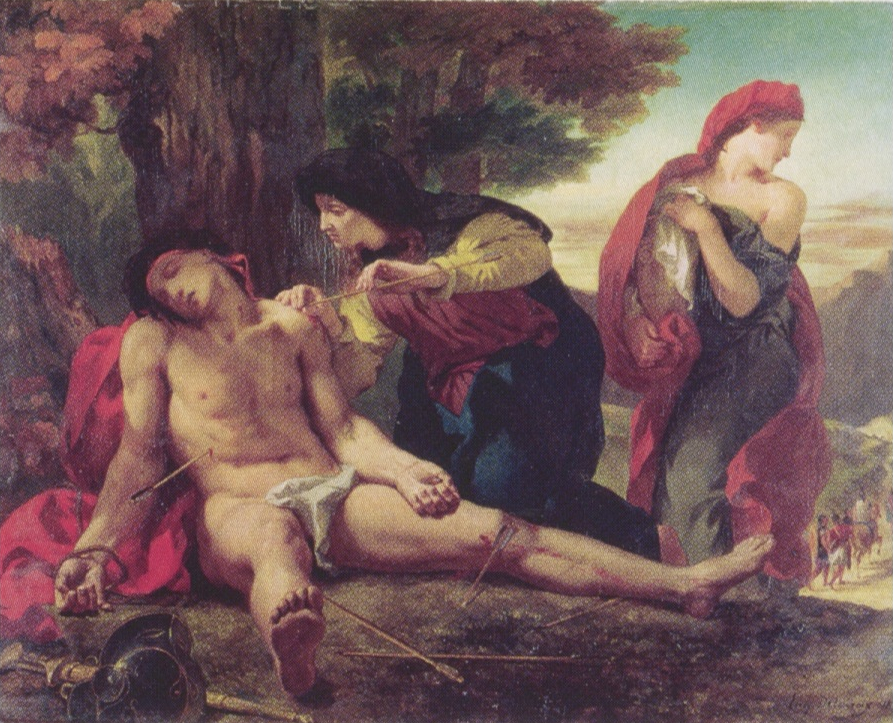Delacroix to Open September 17
|
|
French
painter Eugène Delacroix (1798–1863) was one of the greatest creative
figures of the 19th century. Through his choice of daring subjects and
compositions, a vibrant palette, and bold brushwork, he set into motion a
cascade of innovations that changed the course of art. As Van Gogh
wrote in 1885: "What I find so fine about Delacroix is precisely that he
reveals the liveliness of things, and the expression and the movement,
that he is utterly beyond the paint." Although Delacroix is
celebrated as the embodiment of the Romantic era, much remains to be
understood about his life and prolific career. Delacroix,
which opens on September 17 at The Metropolitan Museum of Art, will be
the first comprehensive retrospective in North America devoted to the
artist. Visitors will discover a protean genius who continues to set the
bar for artists today.
Delacroix is organized by The Metropolitan Museum of Art and the Musée du Louvre.
Exhibition Overview
The exhibition will feature the three main phases of Delacroix's career, which spanned more than four decades. The first section will be devoted to his formative years during the 1820s, when his ambitious paintings exhibited at the annual Paris Salons won him public recognition. The second section will focus on his exploration of historical themes, often on a grand scale, informed by public commissions from the 1830s onward. The third section will present an overview of the artist's final years, marked by his triumph at the Universal Exposition of 1855 and his growing interest in nature. The presentation will enable visitors to explore the diversity of themes that preoccupied Delacroix throughout his life. For example, he engaged with the art of the past; had a lifelong fascination with literary, historical, and biblical themes; and made transformative contributions to printmaking and book illustration. The exhibition will spotlight Delacroix's interest in the world beyond Europe, including his own epochal voyage to North Africa in 1832. The variety of works will reveal Delacroix's creative process and his progressive mastery of materials, including oil paint, watercolor, and graphic media. Among the highlights will be Delacroix's landmark works  Greece on the Ruins of Missolonghi (1826), The Battle of Nancy (1831),  and Women of Algiers in Their Apartment (1834). ![Image result for [[["xjs.sav.en_US.y5vqFNLwkD0.O",5]],[["id","type","created_timestamp","last_modified_timestamp","signed_redirect_url","dominant_color_rgb","tag_info","url","title","comment","snippet","image","thumbnail","num_ratings","avg_rating","page","job"]],[["dt_fav_images"]],10000]](https://imgc.artprintimages.com/img/print/print/eugene-delacroix-christ-in-the-garden-of-gethsemane-1824-27_a-l-9424457-8880731.jpg?w=550&h=550) Visitors will have the first opportunity in a generation to examine closely Christ in the Garden of Olives (1824–27), removed from its perch high on the wall of the Parisian church of Saint-Paul-Saint-Louis and cleaned especially for the exhibition. Delacroix's genius as a lithographer will be demonstrated in the 1828 French edition of Goethe's Faust. The book will be paired with never-before-exhibited proof impressions for its illustrations, along with preparatory drawings for individual plates. The Met's Department of Paintings Conservation has completed a yearlong treatment of the seminal still life Basket of Flowers (1848–49), removing a scrim-like layer of old varnish to reveal Delacroix's full coloristic brilliance.  Saint Sebastian Tended by the Holy Women (1836)  and Medea about to Kill Her Children (1838) will convey the grandeur and gravitas of the artist's maturity,  while his anthropomorphic approach to animal subjects will be on full display in Young Tiger Playing with Its Mother (1830)  and The Lion Hunt (1855). Exhibition visitors will come away with a broadened appreciation for Delacroix's remarkable oeuvre and its enduring appeal.
Delacroix
is organized by Asher Miller, Assistant Curator in the Department of
European Paintings at The Met, in collaboration with Sébastien Allard,
Director of the Department of Paintings at the Musée du Louvre, and Côme
Fabre, Curator in the Department of Paintings at the Musée du Louvre.
The exhibition will be accompanied by a richly illustrated catalogue offering a fresh take on Delacroix's complex character. |
